Octave Chanute: Patron Saint of Flight
Facebook has many flaws, but it does alert me when events I might be interested in are coming up. A few weeks ago I found out about the world premiere of Octave Chanute: Patron Saint of Flight, at Indiana Dunes Visitor Center. I knew the Chanute name vaguely from the old Air Force base, but I couldn’t have told you then where the base had been located or why it was named Chanute. This sounded like a way to get in a visit to Indiana Dunes, learn something, and spend what might be otherwise a dull winter afternoon, depending on the weather.
The parking lot was unusually crowded, and when J and I walked in about a half hour early, a good-sized group was watching Shifting Sands: On the Path to Sustainability, a documentary on the history of Indiana Dunes and efforts to restore what can be restored. It’s meant to inspire, but it’s also tragic and depressing.
By the time Shifting Sands ended and Octave Chanute was scheduled to begin, the auditorium had filled up, even when extra folding chairs were brought out. Soon it was standing room only.
Simine Short, author of Locomotive to Aeromotive: Octave Chanute and the Transportation Revolution, and young director Paul Nelson introduced the film. I mention Nelson’s relative age because the audience was mostly 50 plus, possibly 60 plus, which disappointed me because I would like to see younger people interested in history. Of course, when I was younger none of my peers would have been interested, either.

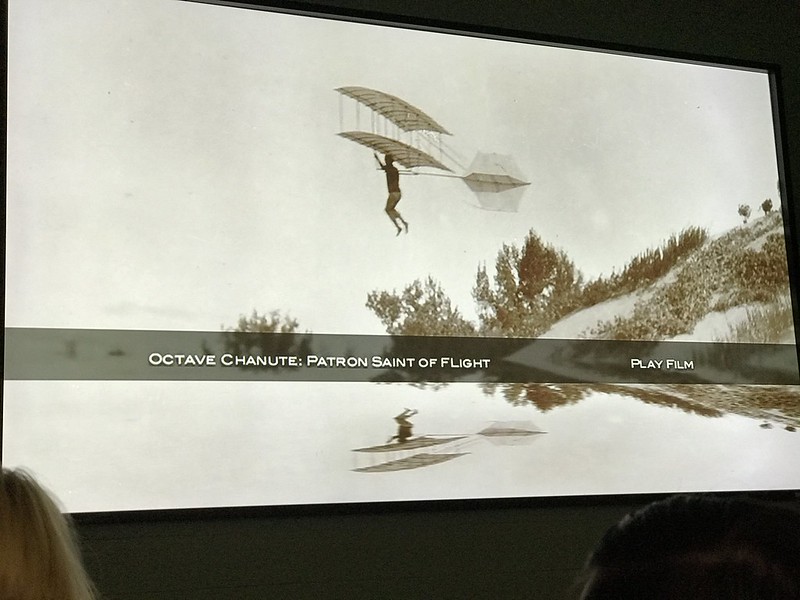
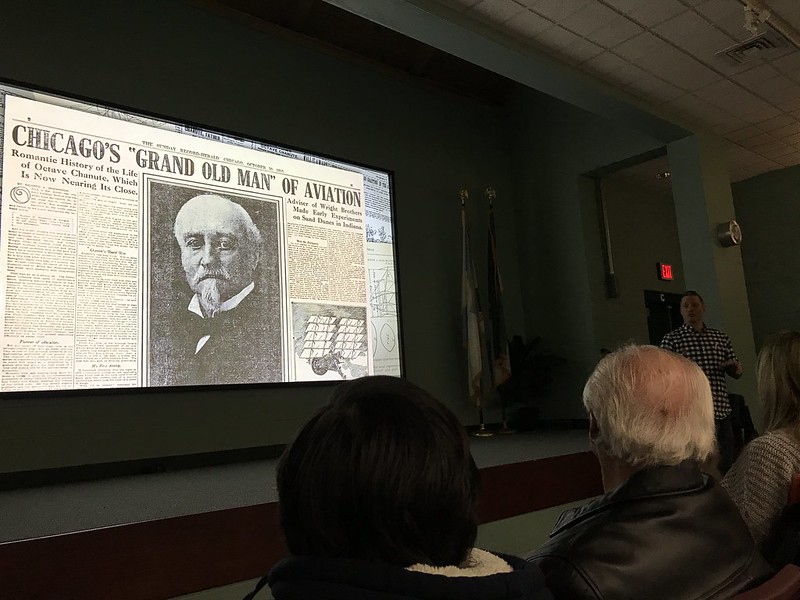
Bridge 16, or the Portage Bridge
The presentation began with some technical glitches (flashbacks to every high school A/V club everywhere!), but my ears perked up at the mention of the Portage Bridge, accompanied by a photo I recognized immediately. Through this film, I found out Octave Chanute was the engineer behind the much-loved railroad bridge over the Genesee River at Letchworth State Park in New York.
Known for his bridges, Chanute was called in when the original timber trestle, the longest and tallest wooden bridge in the world when it opened in 1852, was reduced to ashes on May 6, 1875, after a train had passed over (spark?). Chanute’s iron replacement opened only 86 days after the fire. According to Short’s book, the piers were rebuilt and the uprights and girders strengthened in 1880, “making the bridge better than new.”

The original timber Bridge 16 over the Genesee River
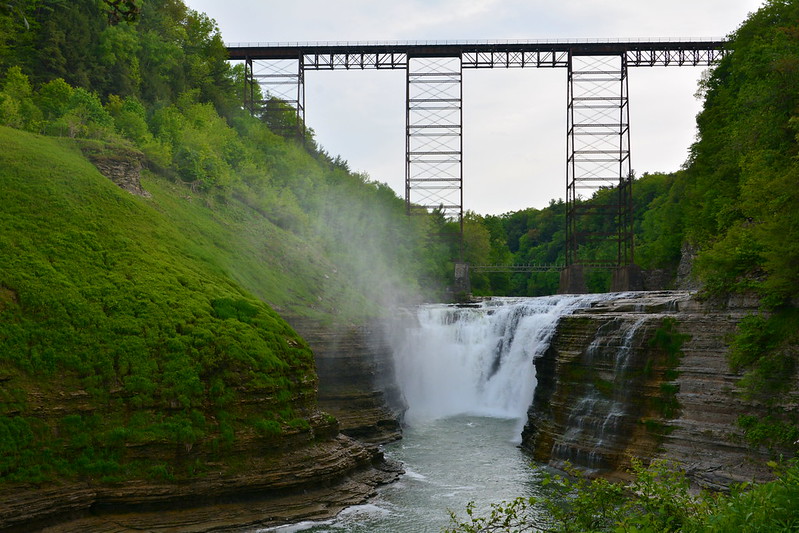

Although modern Norfolk Southern trains were restricted to 10 miles per hour over the Letchworth gorge, Chanute’s bridge lasted until 2017, when the Genesee Arch Bridge opened. The state of New York declined the offer of the 1875 bridge, the last of which was demolished on March 20, 2018. I’d been fortunate to visit the old bridge one last time in 2015. When I’d found out about the premiere of this film, I’d had no idea it would take me back to perhaps the most iconic of my childhood memories. I remember walking along those tracks with my brother during one of his visits.
But wait! There’s more!
Kinzua Bridge
My ears perked up again at the mention of Kinzua Bridge. I’d found out about Kinzua Bridge State Park when I was looking up Kinzua Dam, another place I’d visited as a child, for my 2015 swing through Ohio, New York, and Pennsylvania.
It turns out that Octave Chanute was behind the original 2,000-foot-long Kinzua Bridge (or Viaduct), built in 1882 at 302 feet above the narrow valley floor. Short calls it Chanute’s “most spectacular bridge.” She adds that the bridge was rebuilt in 1900 “to keep up with the increasing volume and weight of the coal traffic.” Carl W. Buchholz redesigned the superstructure on the original masonry foundation piers.
By 1959 the viaduct failed safety inspections and was closed to commercial rail traffic. Restoration began in 2002, but in 2003 an F2 tornado “tore eleven towers from their concrete bases. Investigators found that the anchor bolts, installed under Chanute’s supervision, had rusted over the past 120 years.” Over time, the materials had failed the design.
After seeing this film, I’m even happier that I had the opportunity to walk out on what’s still standing of Kinzua Bridge and get a look at the remnants resting in peace on the valley floor. Even destroyed, Kinzua Bridge is indeed a “spectacular” sight.
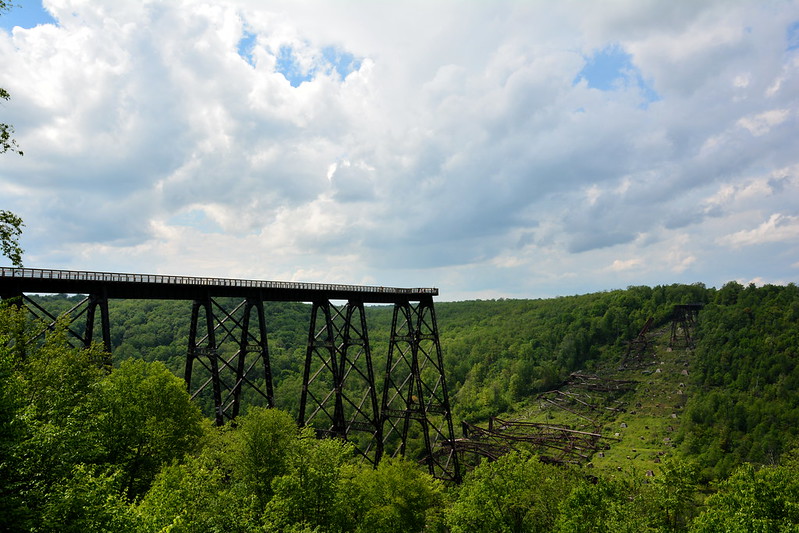
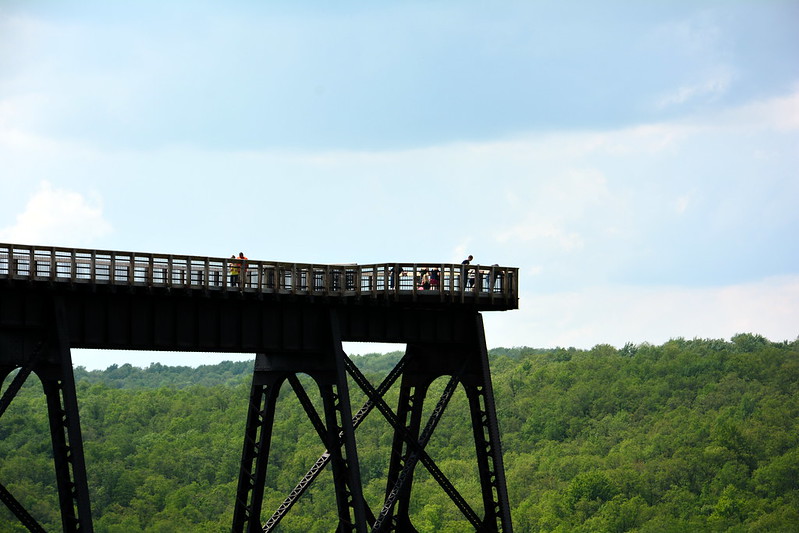
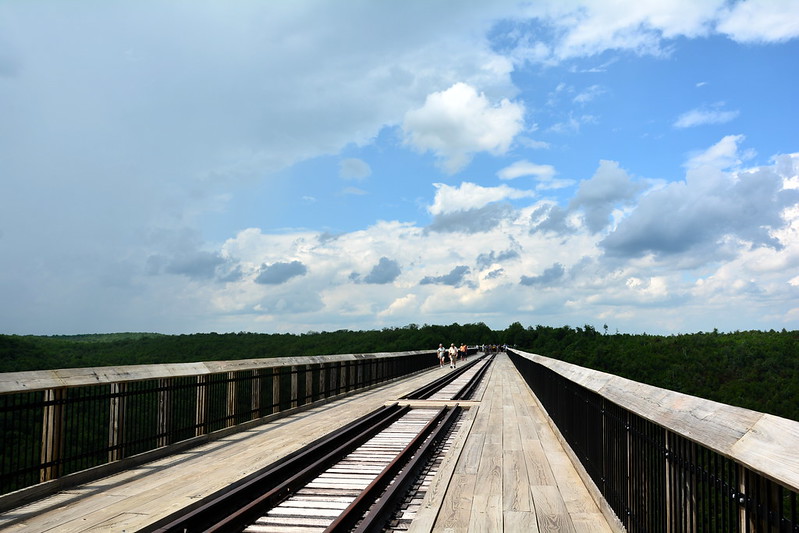

Why Indiana Dunes?
Of course, most of the film was about Chanute’s contributions to flight and relationship with Wilbur Wright (rocky; Chanute was an open source kind of man and Wilbur believed in closely held information). What’s the link to Indiana Dunes? With their lake winds, elevations, and soft sand, the Dunes were Chanute’s choice for safely testing their experiments — the Kitty Hawk of the Midwest.
Epilogue, March 8, 2020
Octave Grill in Chesterton is named for Octave Chanute. Found out they serve a Chanute burger.


So that’s why it’s called (or was called) Chanute Air Force Base in Rantoul, IL. Thanks.